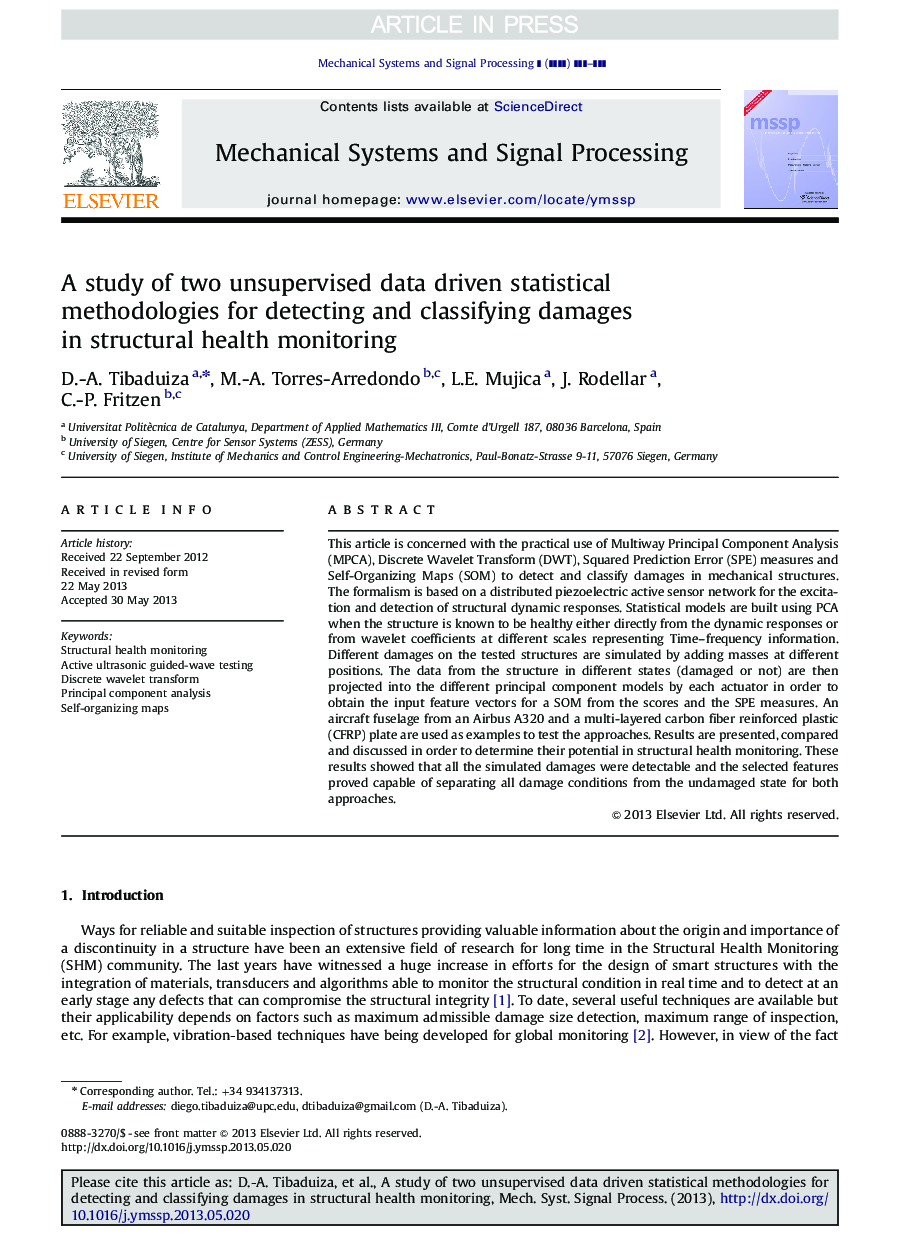| Article ID | Journal | Published Year | Pages | File Type |
|---|---|---|---|---|
| 6956650 | Mechanical Systems and Signal Processing | 2013 | 18 Pages |
Abstract
This article is concerned with the practical use of Multiway Principal Component Analysis (MPCA), Discrete Wavelet Transform (DWT), Squared Prediction Error (SPE) measures and Self-Organizing Maps (SOM) to detect and classify damages in mechanical structures. The formalism is based on a distributed piezoelectric active sensor network for the excitation and detection of structural dynamic responses. Statistical models are built using PCA when the structure is known to be healthy either directly from the dynamic responses or from wavelet coefficients at different scales representing Time-frequency information. Different damages on the tested structures are simulated by adding masses at different positions. The data from the structure in different states (damaged or not) are then projected into the different principal component models by each actuator in order to obtain the input feature vectors for a SOM from the scores and the SPE measures. An aircraft fuselage from an Airbus A320 and a multi-layered carbon fiber reinforced plastic (CFRP) plate are used as examples to test the approaches. Results are presented, compared and discussed in order to determine their potential in structural health monitoring. These results showed that all the simulated damages were detectable and the selected features proved capable of separating all damage conditions from the undamaged state for both approaches.
Keywords
Related Topics
Physical Sciences and Engineering
Computer Science
Signal Processing
Authors
D.-A. Tibaduiza, M.-A. Torres-Arredondo, L.E. Mujica, J. Rodellar, C.-P. Fritzen,
